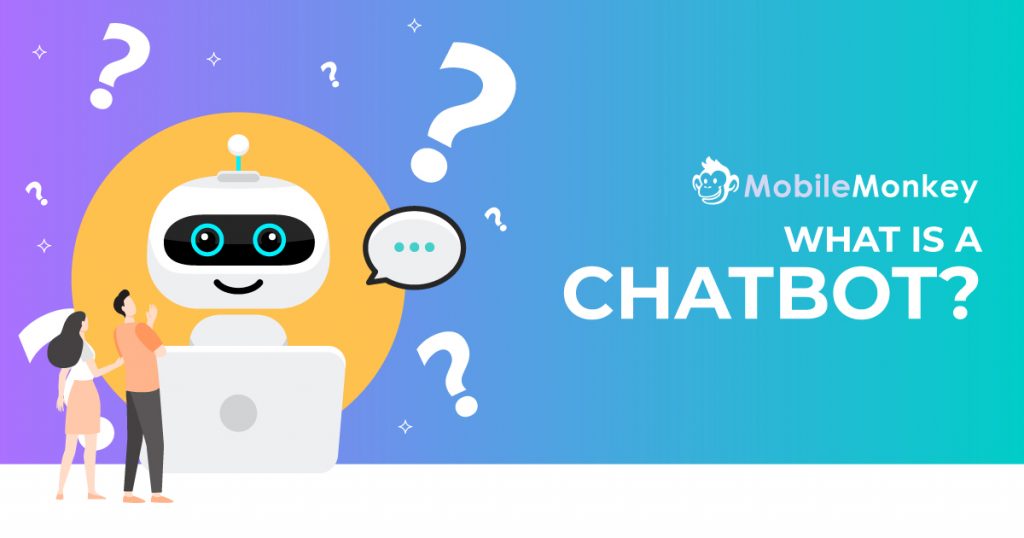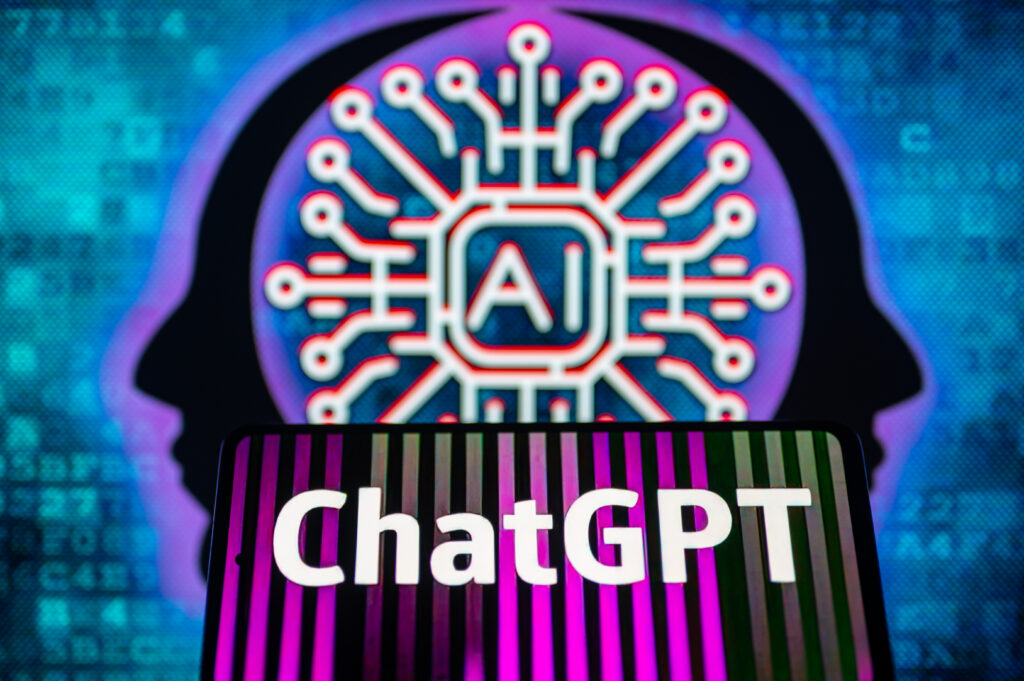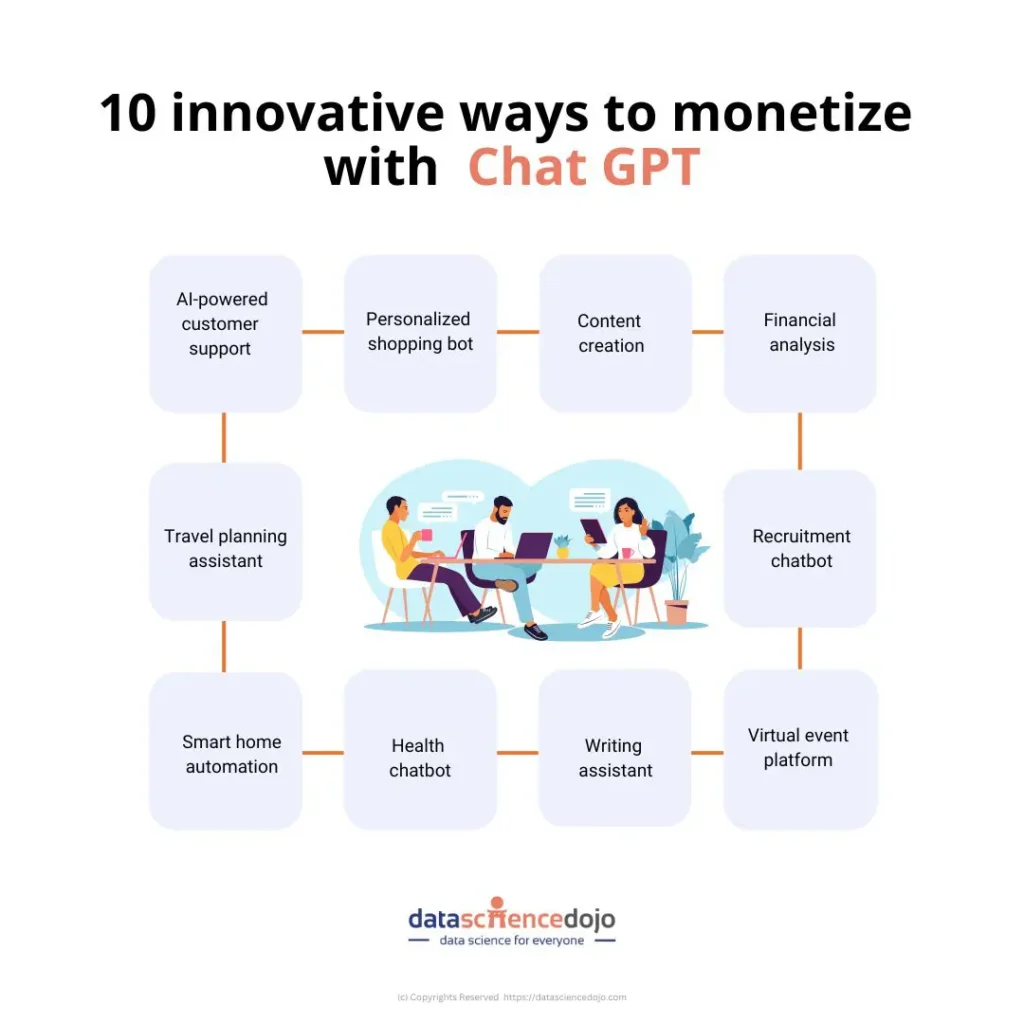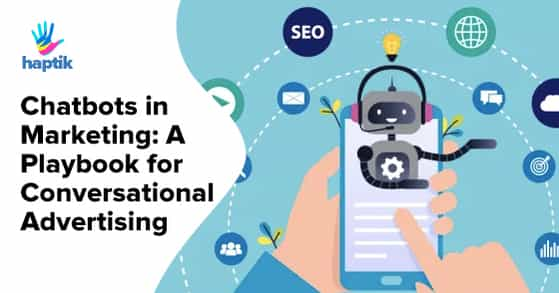Introduction
In today’s digital age, there are limitless ways to monetize business, and one such avenue that is gaining traction is chatbot advertising. As an online entrepreneur, you may be asking, “What is chatbot advertising, and how can it help me generate more revenue?” I’m glad you asked!
Overview of chatbot advertising
Chatbot advertising refers to the implementation of AI-powered chatbots on your business platforms that interact with visitors, promoting your products/services, answer their queries, and guiding them through their buying journey. Essentially, these chatbots are your business’ virtual assistants, providing a seamless customer experience while subtly advertising your offerings.
It is an effective way of engaging your target audience because it allows businesses to provide personalized, 24/7, real-time responses. Customers today have increasingly high expectations for swift and relevant responses, making the use of chatbots in advertising a necessity for businesses who seek to provide unrivaled customer service.
The connection between AI and chatbots
You might be curious about how AI fits into all this. Well, AI is at the heart of chatbot technology. With capabilities such as natural language processing and machine learning, AI chatbots can understand and respond to user queries accurately. They continue to learn and improve their interactions as they engage with more people, therefore making the interaction with your business’ customers more natural, personal and effective.
By monetizing AI through chatbot advertising, businesses can drive conversions, enhance customer satisfaction, boost brand awareness, reduce operational costs, and significantly increase their revenues. The future of online business monetization is here, and if you have not already, it’s time to embrace chatbot advertising.
I hope this brief introduction provides insight into the world of chatbot advertising and its extraordinary potential in revolutionizing the way businesses monetize their operations.

This image is property of customers.ai.
The Rise of AI in Business
In recent years, we’ve witnessed a swift surge in the integration of Artificial Intelligence (AI) into the everyday operations of businesses. As major industries acclimate to the digital age, AI, more specifically chatbots, have emerged as powerful tools for enterprises across the world. When prudently employed, chatbots can revolutionize customer engagement, streamline transactions and give businesses a much-needed edge in a competitive digital landscape.
Chatbots as a powerful tool for businesses
Chatbots, in their simplest form, are designed to simulate human conversation. Whether it’s resolving customer service inquiries, processing transactions or capturing leads, chatbots have evolved to offer much more than just idle chatter. In the context of online business, they can be harnessed to drive revenue generation, attract new customers and above all, represent brands in a unique and engaging way.
Increasing popularity and acceptance of AI in business
ICustomer acceptance of AI in business is steadily growing. In fact, studies suggest that customers appreciate the quick response times, round-the-clock availability, and personalized assistance that AI chatbots provide. On the business side, this transition to AI has several advantages, including cost saving on customer service, improved efficiency and enhanced customer experience, resulting in increased sales and revenue.
How chatbots are transforming business operations
Chatbots are not only changing the customer-facing aspects of businesses but are also reshaping internal operations. Many businesses are using AI to optimize scheduling, inventory management and even human resource functions. Through machine learning and data analysis, chatbots have the potential to predict consumer behaviors, optimize business operations and ultimately, contribute to a healthier bottom line.
In a nutshell, chatbot advertising has emerged as a game-changing tool in monetizing AI in business. As more businesses jump on this digital bandwagon, this trend is certain to intensify in the future.

This image is property of observer.com.
Understanding Chatbots
I am thrilled to dive into the realm of chatbot advertising: a powerful tool that has been revolutionizing online businesses by monetizing AI technology. If you’ve ever interacted with a customer service representative online, chances are, it was a chatbot.
Types of Chatbots
Chatbots emerge with varying levels of sophistication. Some resemble simple rule-based systems to answer frequently asked questions. Others, better known as ‘intelligent chatbots,’ use machine learning to understand language, sentiments, and context, delivering a convincingly human-like interaction. Understanding these types significantly impacts a business’s marketing strategy and, ultimately, the audience response.
Key Functions of Chatbots
Chatbots wear many hats, don’t they? Mainly, they serve as customer service representatives, assisting website visitors with navigation, answering questions, and solving minor issues. Simultaneously, they act as sales assistants, recommending products based on user interaction and behavior. They’re also responsible for gathering valuable customer data, thus playing a crucial role in understanding customer behavior and preferences—insights that drive personalized marketing campaigns.
How Chatbots Work
The mechanism that brings chatbots to life is indeed fascinating. At a basic level, chatbots are programmed to respond to specific keywords or phrases. The more advanced ones, however, use AI’s power and employ natural language processing (NLP) to understand and reply contextually. Either way, they introduce an automation level that eliminates human intervention for mundane tasks—leading to reduced costs and enhanced efficiency.
So, while chatbots can bring numerous benefits to a business – facilitating customer interaction, driving sales, collecting customer data – the key lies in choosing (and programming) the right one. With a well-built chatbot, the prospects of monetizing AI in business seem promising.

This image is property of datasciencedojo.com.
Integrating Chatbots into Business model
It’s been incredible to see how the integration of chatbots into business models has rapidly progressed. These AI-powered assistants have transformed the way businesses operate and interact with customers, enhancing productivity and customer satisfaction.
Benefits of integrating chatbots into a business model
Firstly, I’d like to take a moment to discuss the numerous benefits of integrating chatbots into a business model. Especially in this digital age, where immediacy is often expected, chatbots can provide instant responses, enhancing customer engagement and satisfaction. Furthermore, they can be available 24/7, effectively providing round-the-clock customer service. They eliminate human error, ensuring precision and efficiency in their operations.
Business operations that can be supported by chatbots
Now, let’s delve a bit deeper into the different areas of business operations that chatbots can support. In customer support, chatbots can handle initial customer interactions, routing complex queries to human staff only when necessary. This not only improves response times but also allows human staff to focus on more complex and important tasks.
In addition, chatbots can be utilized in marketing and sales. They can provide personalized product recommendations to customers, boosting sales and customer retention rates. Likewise, in lead generation, chatbots can engage potential customers, qualifying leads, and forwarding them to the sales team.
Plus, integrating chatbots in the operations not only streamlines business processes but also provides invaluable customer data, which can be used to optimize business strategies.
So, integrating Chatbot Advertising into your business model could bring immense value. It’s not just about monetizing AI but also about enhancing customer experience and streamlining operations. It’s about being responsive, efficient, and effective in this hyper-competitive business landscape.
Chatbot Advertising
As we delve further into the technological era, new and innovative ways of monetizing AI in business are emerging. One such exciting avenue is through chatbot advertising.
The Concept of Chatbot Advertising
As the very translation of the term suggests, chatbot advertising involves integrating artificial intelligence into your advertising strategy. It’s not just about robotic responses, but a dynamic interaction tailored to provide value to the customer.
Unlike traditional advertising methods that cast a wide net hoping to catch a few interested customers, chatbot advertising allows businesses to engage with their audience on an individual level, learn about their needs, and deliver targeted ads in real time. Furthermore, with chatbots’ capability to gather and analyze customer data, you can continually improve your advertising strategy based on insights gathered from interacting with your customers.
How Chatbots Can Be Used In Advertising
AI-powered chatbots can revolutionize your advertising strategy in several ways. First, they can provide personalized product recommendations based on all the previously gathered user data, effectively marketing the products best suitable for each individual user.
Second, chatbots can act as a powerful retargeting tool, reminding customers about the items they left in their shopping cart or enticing them back with attractive offers. Finally, they can drive user engagement, increasing brand recognition and loyalty.
Imagine the potential of effectively engaging with each and every customer personally at scale. With chatbot advertising, this is not some distant possibility, but a reality today. This is the new frontier of advertising – a convergence of technology and human touch brought to you by AI.
Chatbot advertising is indeed the future of monetizing AI in business. As we advance further into this realm, the opportunity for businesses to capitalize on this technology becomes even more significant.
This image is property of i.insider.com.
Monetization of AI Through Chatbots
Chatbot advertising is all about strategically using AI-powered bots as advertisement platforms to generate revenue. Isn’t it fascinating that technology which was once thought to merely help operations has now become a money-making machine in the hands of businesses? A chatbot is much more than just a customer support tool, it can also be a money-spinner!
Generating revenue through chatbot advertisements
Chatbot advertisements are the new-age salespeople, who work 24×7 without any deviation or error. They are designed to interact with users, providing them unparalleled customer experience along with subtle promotional messages. Many businesses use different monetizing strategies, like sponsored recommendations or pay per performance, and earn significant revenue from chatbot advertisements. These AI bots are creating a win-win situation for all, customers get personalized service, sponsors get target audience, and businesses get profit!
Use cases of successful chatbot advertising
An interesting use case of successful chatbot advertising is the ‘Dom the Pizza bot,’ an AI-powered bot used by Domino’s Pizza. Dom allows customers to place orders, track their delivery, and get answers to their queries in real-time. But its most significant contribution is subtly promoting their latest offers and deals, influencing customers’ purchase decisions. Another successful use case is the infamous Sephora Reservation Assistant, an AI chatbot. This chat, developed by Sephora, helps customers book make-up appointments, gives beauty tips, and indirectly promotes the company’s products.
Chatbot advertising offers businesses an opportunity to monetize their platforms in an innovative way. With the ability to provide targeted, personalized content to users, chatbots are redefining ads and leading brands towards greater profitability.

This image is property of 8183098.fs1.hubspotusercontent-na1.net.
Key Factors for Successful Chatbot Advertising
As we delve into the era of artificial intelligence, I’d like to shed some light on the significant role chatbots play in monetizing online businesses. I’ll point out a few key factors one needs to consider for successful stride in the field of chatbot advertising. It’s noteworthy that the success of any chatbot business model relies heavily on comprehending audience persona, implementing personalized advertising, and the overall quality and performance of the chatbot.
Understanding Audience Persona
For every business, their audience is the powerhouse that drives success. For chatbot advertising, being thoroughly cognizant about the audience’s persona, their behavior, interests and needs helps in engaging them more effectively. Deploying AI driven techniques to collect and analyze data can be leveraged to configure bots in a manner that they can offer realistic and relevant solutions to user queries. Focusing to match the tone and language of the bot with the audience can significantly enhance user experience and provide the business a competitive edge.
Implementing Personalized Advertisements
In the modern age where the clients expect more than just ordinary, personalization in advertisements has become the cornerstone of customer satisfaction. When chatbots are programmed to deliver personalized ads based on user’s preferences and buying behavior, it doesn’t just enhance user experience, but also converts potential leads into successful sales. Remember, personalization is the key to customer retention and long-lasting relationships.
Quality and Performance of Chatbot
An indispensable aspect of monetizing chatbots lies in their quality and performance. The navigational usability, response speed, and relevance of answers are some main factors that determine user satisfaction. AI-learning and natural language processing can greatly improve the chatbot’s capability to comprehend and respond to complex user queries. Plus, consistent testing and improvements are a must to ensure the chatbot performance doesn’t falter.
By properly harnessing these integral factors, I believe businesses can effectively optimize chatbot advertising and unlock new avenues of monetization and growth.
Challenges and Limitations of Chatbot Advertising
There’s no doubt – chatbot technology has transformed the way we communicate and do business. But like all technology, it has its shortcomings. Despite the significant advancements in this field, we still face the twin challenges of privacy issues and technical constraints in chatbot advertising.
Issues of Privacy
Privacy concerns are at the forefront of chatbot advertising challenges. As an entrepreneur, I am always careful about my user’s data. As much as I want to know my customer, I also respect their privacy. Hence, achieving a balance between the two is always a challenge. Overstepping the boundary and infringing on user’s privacy rights could potentially damage my brand’s reputation. On the other hand, if I don’t ask for enough information, I can’t deliver a personalized service. It’s a tight-rope walk.
In this track, I’ve learned to embrace privacy-enhancing technologies, which offer a high level of encryption for the data that chatbots collect. Remember, transparency about how you use the collected data can help build trust among users.
Technical Constraints
The second challenge comes in the form of technical constraints. AI technology continues to evolve at a rapid pace, but it’s not always smooth sailing. At times, my chatbot fails to understand the intricacies of human conversation, leading to frustration for the user. This not only impacts the customer experience but can also influence my bottom-line.
I strive to overcome these limitations with continued testing and development. Incorporating more natural language processing capabilities could make bots more relatable and responsive. While this necessitates a more significant investment in the short term, I believe it will pay dividends in the long run by enhancing user experience and engagement. After all, the real beauty of business is the ability to adapt and evolve.
So, even as we pursue the tremendous potential of chatbots in advertising, let’s not lose sight of these challenges. Keeping a keen eye on them will help us create more robust and effective chatbot advertising strategies.
Case Studies
The rise of Artificial Intelligence (AI) and automation technologies have given rise to some revolutionary digital marketing tools – Chatbots, being one of them. In this post, I’d like to highlight a couple of examples where businesses monetized chatbot advertising, enhancing customer satisfaction while increasing their profit margins simultaneously.
Success stories of chatbot advertising
Consider the case of the clothing brand H&M, they implemented a chatbot on their website to assist customers with their shopping experience. The chatbot would offer suggestions based on style preferences customers indicated, thus serving as a virtual shopping assistant. This not only resulted in enhanced customer satisfaction but also an increase in sales – an ingenious way of monetizing AI.
Another excellent example would be the Facebook Messenger bot by 1-800-Flowers. With the help of AI, the bot simplifies the ordering process by enabling customers to order flowers directly through the Messenger app without having to leave the chat. It’s an incredibly seamless process and has led to an increase in orders and business revenue.
Lessons learnt from these businesses
These case studies teach us important lessons about leveraging AI in business. For one, chatbots can provide an elevated level of customer service — they’re quick, efficacious, and function 24/7 without tiring.
Moreover, an AI chatbot can provide a personalized experience, which cultivates customer loyalty and stimulates revenue growth. It’s also crucial to stress here that the introduction of chatbots doesn’t denote an end to human involvement. Instead, it indicates a change in how businesses can use human resources more strategically. Businesses should focus on optimising chatbots while maintaining a human touch.
The momentum around chatbot advertising continues to amplify. More companies are recognising its potential and adapting it to suit their business models to monetize AI. The sooner we embrace this change, the better ready we’ll be for the future of business.
Future Perspectives
Here, I wish to delve deeper into the world of chatbot advertising, exploring its potential future and the emerging trends we’re beginning to see.
Emerging trends in chatbot advertising
AI is continuously evolving, encapsulating more potential than we’ve ever imagined, and chatbot advertising is no exception. Chatbot technology is becoming more intuitive, understanding and decoding human language in a more sophisticated way. It’s as if you’re conversing with a human at the other end. This improved conversational ability, combined with personalization and automation, is revolutionizing the way advertisements are done. It’s enabling businesses to have meaningful and effective communication with their customers round the clock.
Another noteworthy trend is that advertisers are leveraging AI technology to analyze customer data in real time. This means the chatbot can provide instant product recommendations, make personalized offers, and apply discounts based on each customer’s browsing habits and preferences.
The future of AI in advertising
Imagine having a virtual assistant who can answer all your queries, help you shop, book appointments, or even make reservations at your favourite restaurant. This is the kind of next-level customer service that we can expect from chatbots in the future.
As for the business end, companies can also benefit from chatbots by using them for lead generation and customer service. By automating routine tasks, businesses can focus on their core competencies, thereby enhancing productivity.
The fusion of AI and chatbot technology is undoubtedly holding the torch to a new era of digital advertising. It’s an exciting space filled with opportunities waiting to be exploited to the fullest. I am looking forward to witnessing the evolution of this sphere.
Steps to Implement a Successful Chatbot Advertising Strategy
Implementing a successful chatbot advertising strategy is an intriguing proposition for any business eager to monetize the AI technology and integrate it into their online business model. As business becomes more digital, how we interact with customers significantly changes. Chatbots are becoming increasingly popular as they provide innovative opportunities for monetizing AI in business. To successfully leverage chatbot advertising, there are some key steps must be considered: planning and goal setting, chatbot development, testing and monitoring, and learning and adapting.
Planning and Goal Setting
The initial step involves determining what you want your chatbot to achieve. Consider your business objectives, the target audience, and how the chatbot can help facilitate and achieve these goals. Essentially, you should identify the key tasks you want the chatbot to perform and strategize on how it can help improve your customer experience and ultimately drive sales.
Chatbot Development
Once you’ve set clear goals, the next step is to develop your chatbot. This process includes defining your chatbot’s character, writing scripts, and creating response paths. It’s important to design chatbots that are interactive, engaging, and have a human-like touch to increase user interaction.
Testing and Monitoring
The testing and monitoring phase is critical for verifying how well the chatbot serves user requests and interacts with them. During this stage, you should identify any defects, behavioral issues, or areas of improvements, and then use this feedback to refine your chatbot experiences.
Learning and Adapting
Since technology and customer needs are continually evolving, it’s essential that your chatbot also learns and adapts to these changes. By employing machine learning and AI algorithms, your chatbot can become smarter over time, improving its interaction with customers and thus, increasing its potential to drive sales and business growth.
In essence, monetizing AI in business through chatbot advertising is a strategic process that requires in-depth planning, careful development, continuous testing, and learning.+,
Conclusion
In this enlightening journey through chatbot advertising, we have seen that chatbots are not merely a blossoming trend in the tech world. They are rather a ground-breaking innovation that is revolutionizing the business landscape. By applying AI into their business model, brands are launching smart chatbots to interact with their customers in real-time. This initiation has not only heightened engagement but has also driven results in monetizing AI in business.
Summarizing the importance of chatbot advertising
Chatbot advertising is crucial in running a successful online business. By bolstering their business model with AI and chatbot technologies, companies are making great strides in reaching their target audience. With personalized communication and immediate responses, customers stay engaged, eventually leading to conversion and ROI improvement. Gone are the days when the success of conversion rates hinged on human effort. The arrival of chatbot advertising has turned them into strategic, automatic processes.
The promising prospects of monetizing AI in business
The prospects of monetizing AI in business beam with possibilities. By sailing the ship of your business in the ocean of AI and chatbots, you can achieve higher conversion rates that translate into more revenue. As AI continues to become more sophisticated, we can expect not only a personalized, convenient and enhanced user experience but also a significant potential for monetization.
In a nutshell, chatbot advertising is a powerful testament to the success of merging technology and business. It is not only about staying in sync with the latest tech trends, but it is about reshaping the way businesses interact with their customers and making the most of these interactions. The age of AI and chatbots has dawned, revolutionizing the world of online business.
